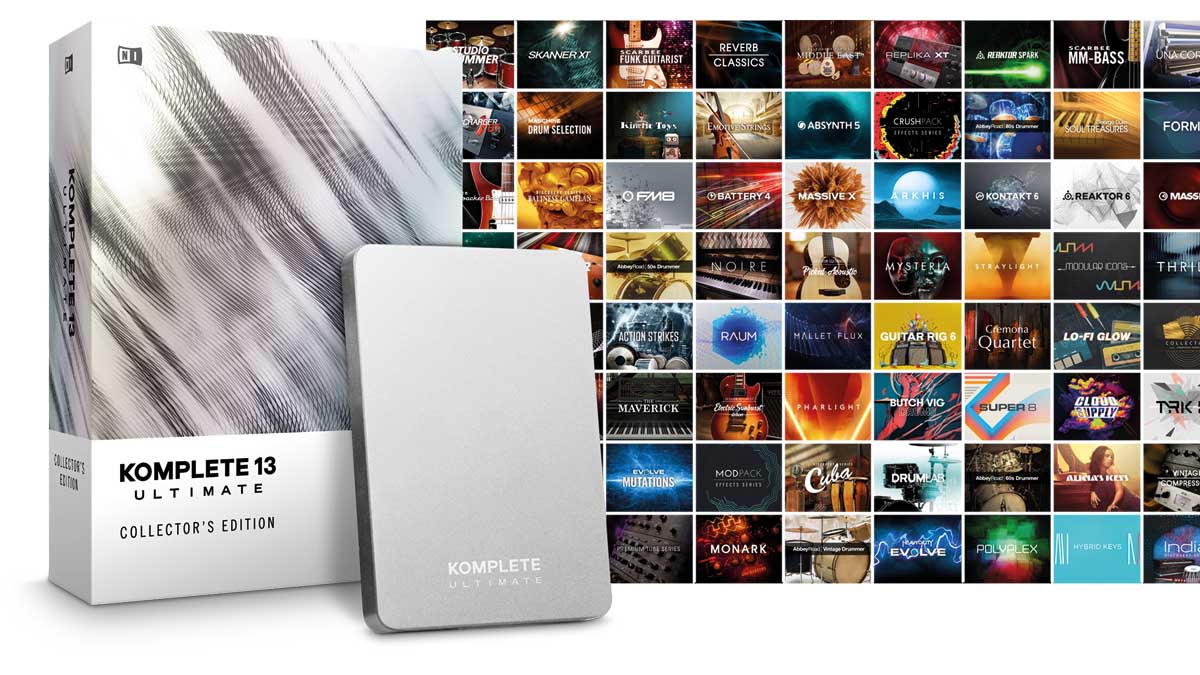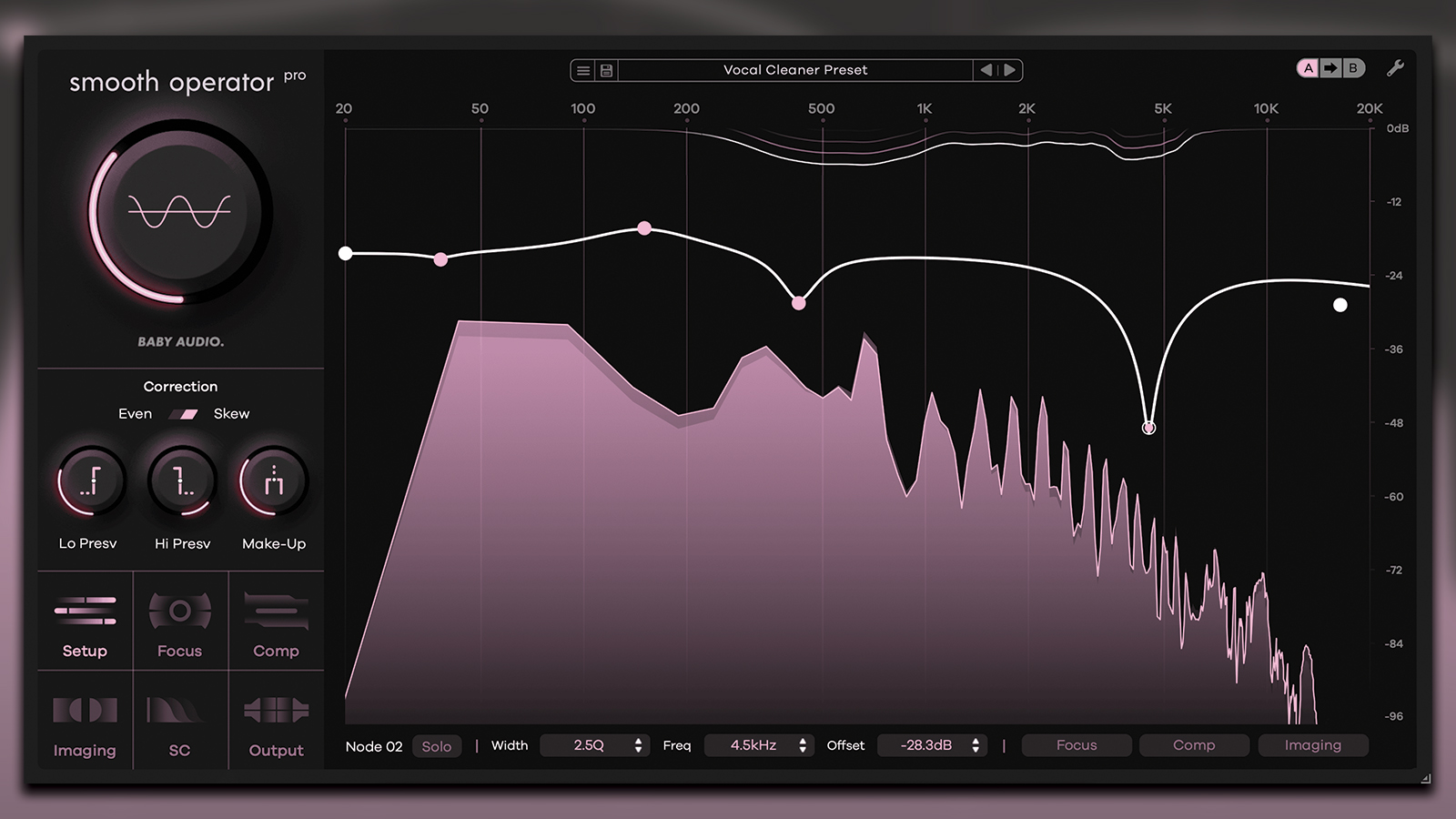The best VST synth plugin bundles 2021: which is the best soft synth collection for you?
Bulk-buy instrument options from Roland, Korg, Arturia, Native Instruments, Steinberg and more

Everyone loves a good deal, and if you’re looking to stock up your hard drive with VST/AU synth plugins, then a bundle offer might be the quickest and most cost-effective way to do it.
Why invest in a plugin bundle? The most obvious benefit is value - all the packages below offer at least some form of discount compared to purchasing the contents individually. Savings range from just shy of €100 at the low end to well over £5,000.
Of course, value in this context is about more than pure financial savings. It’s all well and good picking up hundreds of plugins at a knockdown price, but if it turns out that the majority of them simply don’t suit your way of working then it’s still not such a great deal. As much as anything, value here comes down to whether a particular package gives you what you need.
Some bundles here are limited to purely synths, while some also add in effects, samples or percussion instruments. Whether you see these latter elements as adding value will depend on how useful you’re likely to find them.
For those looking to build a software production setup from a standing start, these more varied packages can be a great way to quickly flesh out your plugin library. If you’re purely interested in capturing the sounds of classic gear, though, then something like Arturia’s V Collection or IK Multimedia’s Syntronik might be the way to go.
Check out what each package includes and price up how much you’re saving by buying in bulk. It could be that buying single synths is still the better option, in which case head for our round-up of the best standalone synth plugins.
The best VST synth plugin bundles 2021

Specifications
Reasons to buy
Reasons to avoid
Arturia’s V Collection is one of the best-known synth collections on the market. It packs in 28 individual plugins, each of which is a carefully-created - although largely unofficial - emulation of some hardware instrument plucked from the past 50-odd years of music technology.
Get the MusicRadar Newsletter
Want all the hottest music and gear news, reviews, deals, features and more, direct to your inbox? Sign up here.
There’s an impressive breadth to the selection here. You get staple classics such as the Minimoog Model D, Roland Junos and Jupiters, Yamaha DX7 and several Oberheim synths. There are a good few leftfield and creative choices, too, such as the Buchla Music Easel, Synclavier and a full Moog Modular system, plus a solid crop of electric pianos and organs.
All of Arturia’s plugins share some nice design touches, including hideable ‘advanced’ views and interactive tutorials, and they often add additional features such as effects or sequencers.
The bundle also comes with Arturia’s Analog Lab plugin, which is effectively a ‘best of,’ offering simple, user-friendly access to staple sounds drawn from across the collection.
As for downsides, while the V Collection has previously dabbled in drums, there’s nothing percussive here in version 8. It’s also a shame that Arturia’s original synth plugin, Pigments, isn’t included, as this would balance the collection out with a touch of modernity.

Specifications
Reasons to buy
Reasons to avoid
Korg’s Collection is one of the oldest synth bundles out there, having started life as the Legacy Collection back in 2004.
While ‘legacy’ has been dropped from the name over the years, this is still very much about celebrating Korg’s heritage. The 11 plugins here are all digital recreations of hardware instruments from Korg’s back catalogue - plus one outsider in the shape of the ARP Odyssey, which Korg reissued in hardware form a few years ago.
That line-up includes several analogue icons, including the MS-20, Polysix and Mono/Poly, all of which do a convincing job of emulating the sound of original circuitry in virtual form.
For our money, though, the highlights here are Korg’s digital instruments of the late-’80s and early-’90s, such as the M1, Wavestation and Prophecy.
Not only do these instruments nail the sounds of the originals - which were staples of ‘90s dance genres such as IDM, jungle and ambient - but in many cases they improve on their designs, which often hid complicated digital synth engines behind small screens and endless menus.

Specifications
Reasons to buy
Reasons to avoid
Komplete, the bundle package from German software titan Native Instruments, is about more than just synths. Combining standalone plugins with sound packs and instruments designed to run in the company’s Kontakt and Reaktor hosts, Komplete 13 features synthesizers, beatmakers, effects and a wealth of multisampled sounds.
That said, it’s the soft synths that are the big-hitters here. Komplete 13 mixes lauded, if perhaps a little dated, classics like Massive, FM8 and Monark, with cutting-edge sounds courtesy of the excellent Massive X, virtual analogue poly sounds from Super 8, plus a few more oddball instruments like the sample-mangling Form.
Komplete also contains the latest version of Reaktor, NI’s flexible synth-building environment. This offers access to a vast library of user creations, along with the excellent virtual modular system Reaktor Blocks.
Komplete is available in several different sizes. Alongside the standard version, NI also offers Komplete Select - more affordable, but a bit lacking on the synth front - and the all-you-can-eat Komplete Ultimate, which also adds the excellent additive synth Razor, and oddball synth-come-sampler Skanner XT.

Specifications
Reasons to buy
Reasons to avoid
Between its TR-808 and TR-909 drum machines, which provided the foundation for house and techno, synths like the SH-101, Jupiters and Junos, and digital classics like the D-50, Roland has been responsible for a broad swathe of highly influential instruments.
With Roland Cloud, you get access to virtual versions of all of these and more, such as the company’s more recent System-1 and System-8 synths. Emulations are powered by the company’s impressive Analog Circuit Behavior tech - essentially the same engines as in Roland’s TR-8S hardware and Boutique series - and offer some of the most authentic vintage recreations around. Alongside those classics, Roland Cloud users also get access to the sample-powered Zenology synth, plus a growing range of samples, effects and expansion packs.
The downside, arguably, is that all this is based on a subscription model. Prices start at $30 per year for the Core tier, but this doesn’t include any of the ‘Legendary’ instruments - ie, the classic gear emulations - and as such isn’t really worth bothering with. The $99 per year Pro tier lets users activate a choice of two ‘Legendary’ emulations, while a $199 per year Ultimate subscription offers access to the whole shebang.

5. Steinberg Absolute 5
Specifications
Reasons to buy
Reasons to avoid
The Absolute bundle from Cubase developer Steinberg rounds up a broad range of synths, samples and sound packs suited to pretty much any genre or application you can think of.
On the synth front, highlights include virtual analogue instruments such as Voltage and the powerful Retrologue 2, and the lush granular polysynth Padshop 2. The bundle also includes Steinberg’s sampler instruments, HALion 6 and HALion Sonic 3, which can act as players for a wealth of synth and acoustic instrument sounds.
Beyond this, Absolute packs organs, pianos, a host of cinematic sound libraries and a variety of drum and percussion sounds.
All in all it’s impressively varied and comprehensive, particularly for those working in fields like soundtrack composition or commercial music projects. However, that variety does mean that it’s hard to imagine any single producer who won’t find at least some of the Absolute content irrelevant to their needs.

6. u-he All Synths Bundle
Specifications
Reasons to buy
Reasons to avoid
German developer U-he is one of the most respected names in the plugin synth game. This bundle collects all six of its current soft synths into a single package.
While this makes it one of the smallest bundles in this round-up, there’s no filler here. Each of u-he’s synths is impressive in its own right, and together they cover a lot of ground.
Diva is one of the finest virtual analogues out there, and has long been a secret weapon of many of the world’s best electronic artists. Hive 2, meanwhile, is one of the most user-friendly - yet still deep and powerful - takes on wavetable synthesis we’ve tried.
On the negative front, the price doesn’t offer a huge discount on what buying all six plugins individually would set you back. You’re looking at a saving of around €95, which is certainly nothing to scoff at, but it might not be enough to convince you that you wouldn’t be better off just picking up two or three of the plugins separately and coming back for the rest later.

Specifications
Reasons to buy
Reasons to avoid
Syntronik is slightly different from the other bundles included in this roundup. Whereas most of the others offer a selection of distinct plugins, Syntronik is effectively a single instrument, albeit one that offers a variety of different UI styles replicating the look and sound of multiple vintage synthesizers.
Syntronik makes use of sampled sounds mixed with some basic virtual analogue synthesis tools. The core sounds are based on a whopping 200GB of samples recorded from 54 vintage instruments. These cover iconic synths from the likes of Roland, Oberheim, Moog and Yamaha, plus some interesting choices such as a variety of string machines and a few early digital keyboards.
The recently announced version 2 has added even more interesting sample sources, including unusual analogue synths such as the Octave Cat SRM and Yamaha's early FM rarity GS-1.
Since the base sounds themselves are samples – often with filtering and/or modulation already involved – there are limits to how far you can take sound design. However, each Syntronik instrument lets users tailor sounds using a virtual analogue filter and amp, with envelopes and an LFO for modulation. Version 2 has improved these capabilities too, with deeper control over the modulation sources and each instrument's individual oscillators.
The 5000+ presets offer a broad range of starting points, so what Syntronik loses in flexibility it gains in authenticity. There's some neat 'lunchbox-style' effect processors included too.


I'm the Managing Editor of Music Technology at MusicRadar and former Editor-in-Chief of Future Music, Computer Music and Electronic Musician. I've been messing around with music tech in various forms for over two decades. I've also spent the last 10 years forgetting how to play guitar. Find me in the chillout room at raves complaining that it's past my bedtime.









